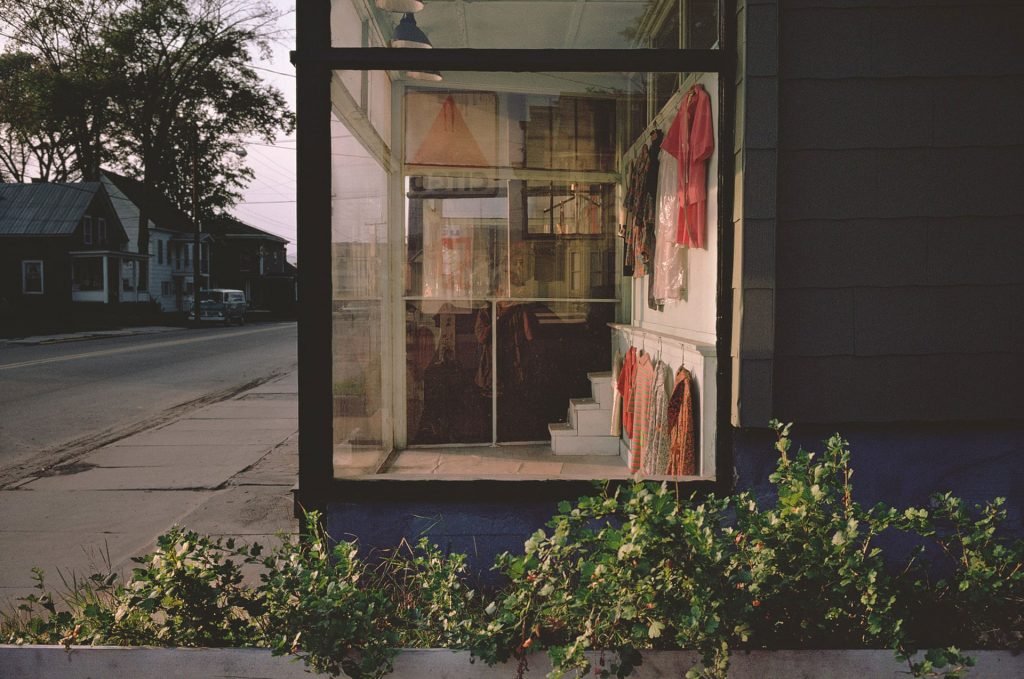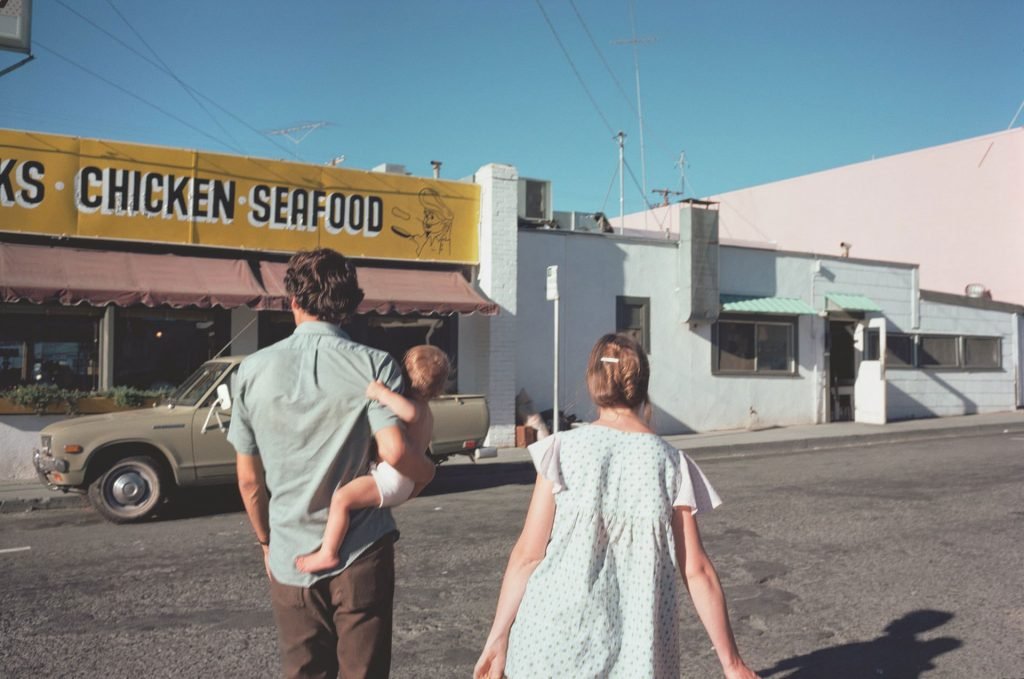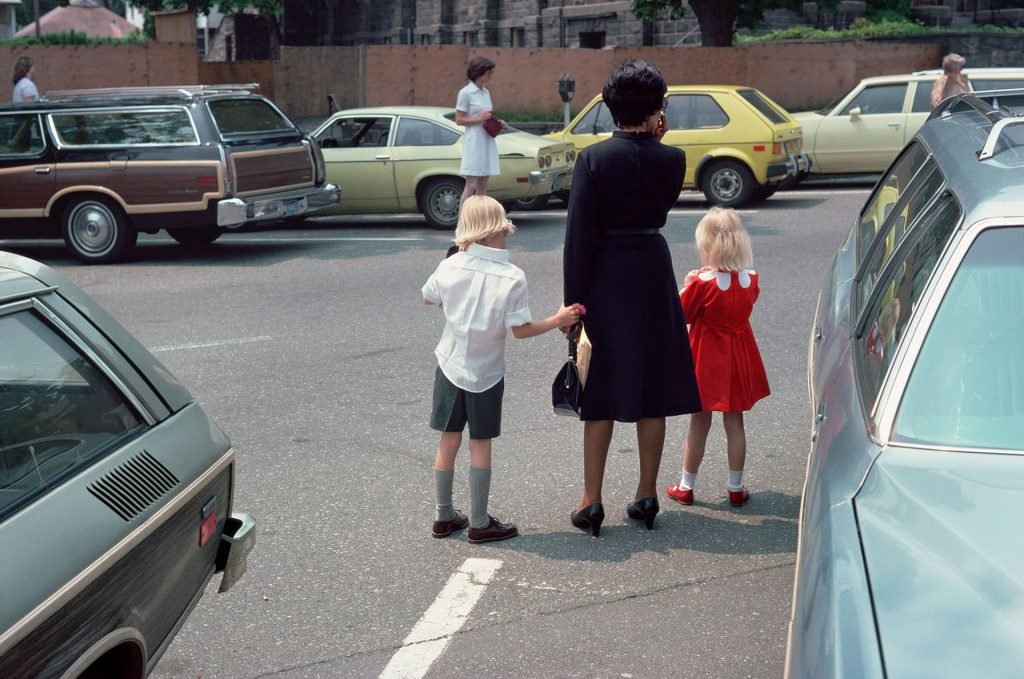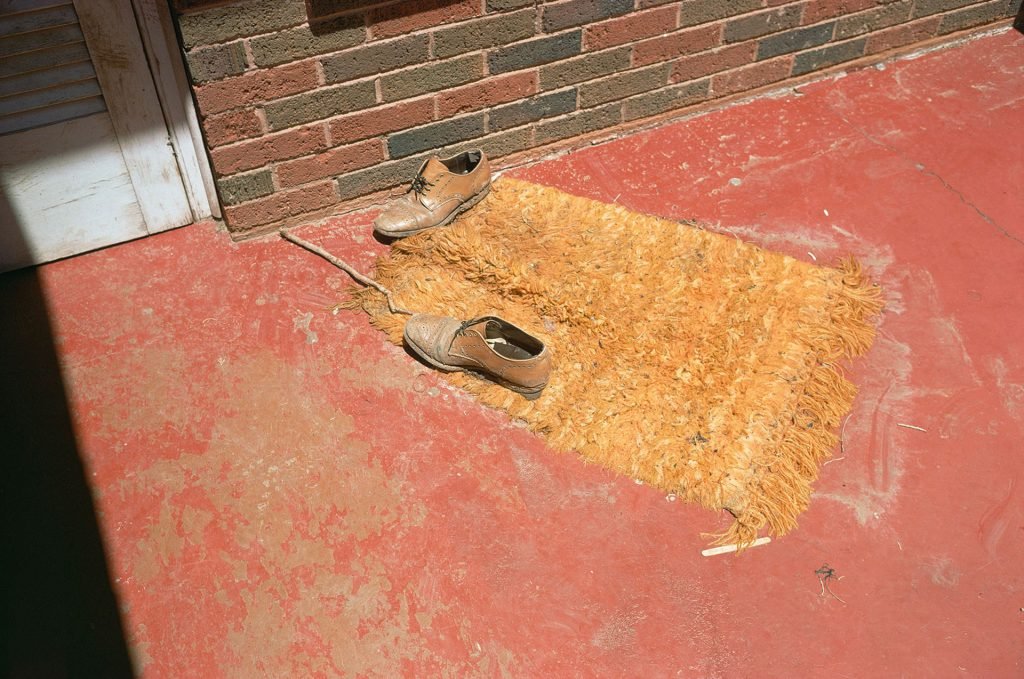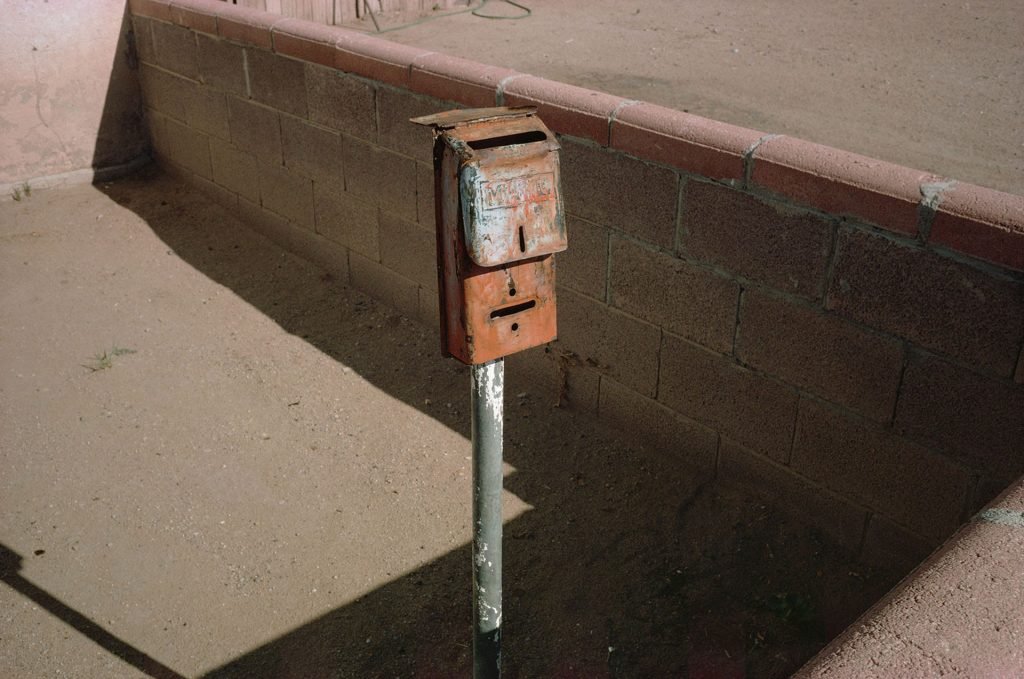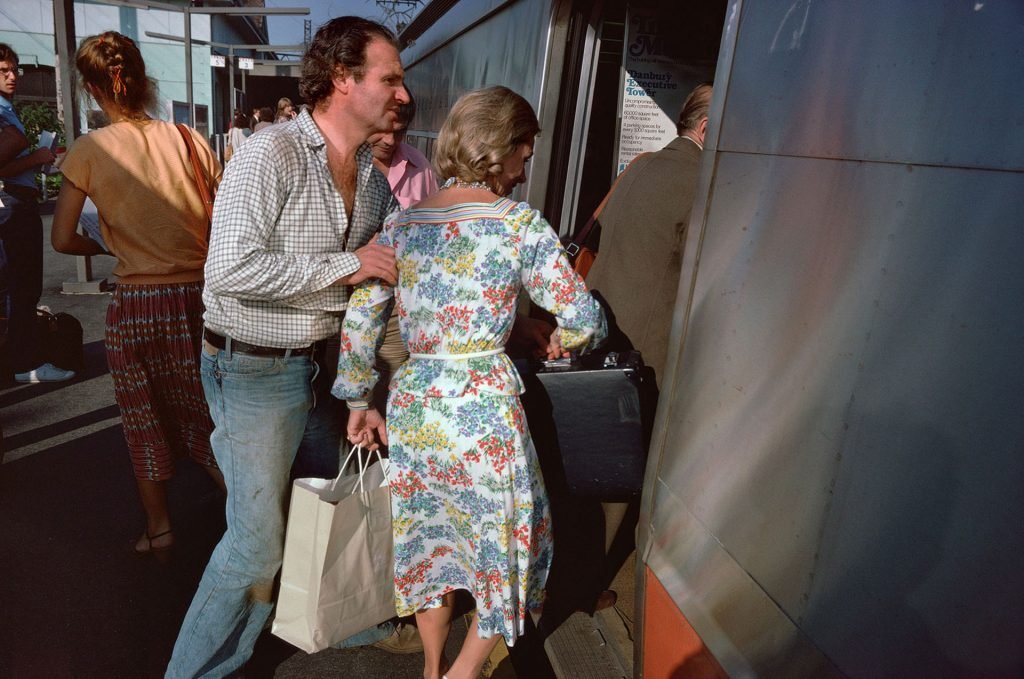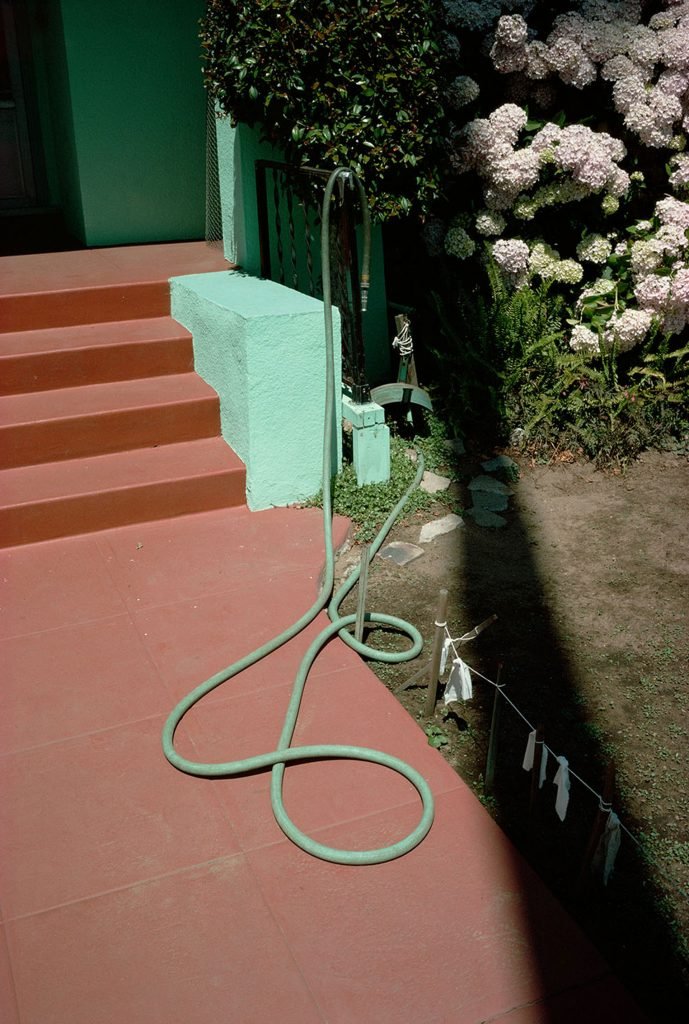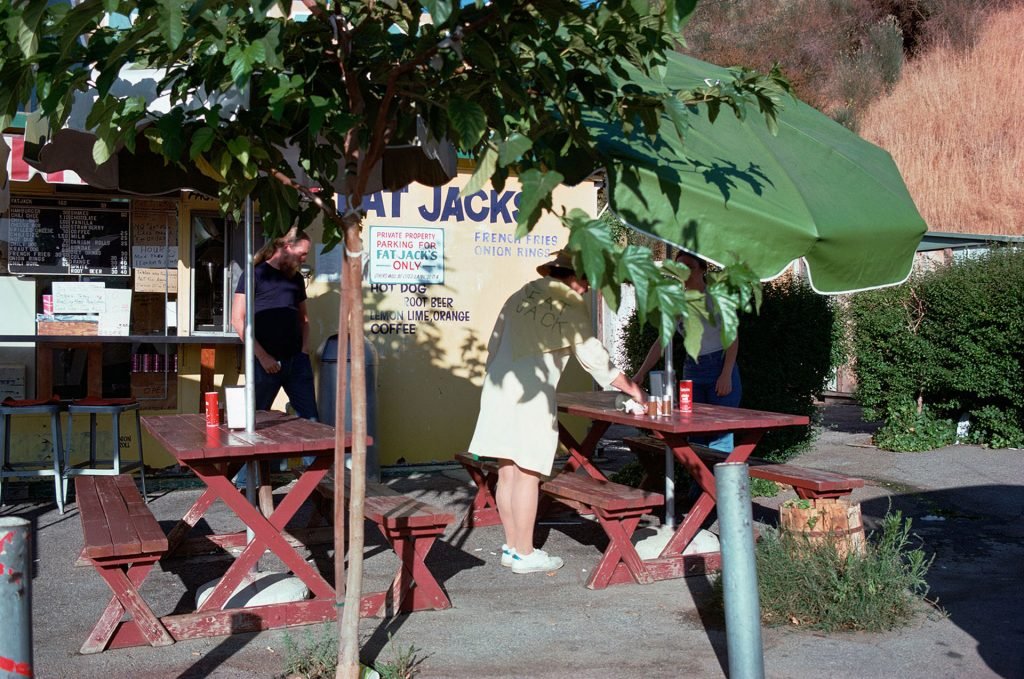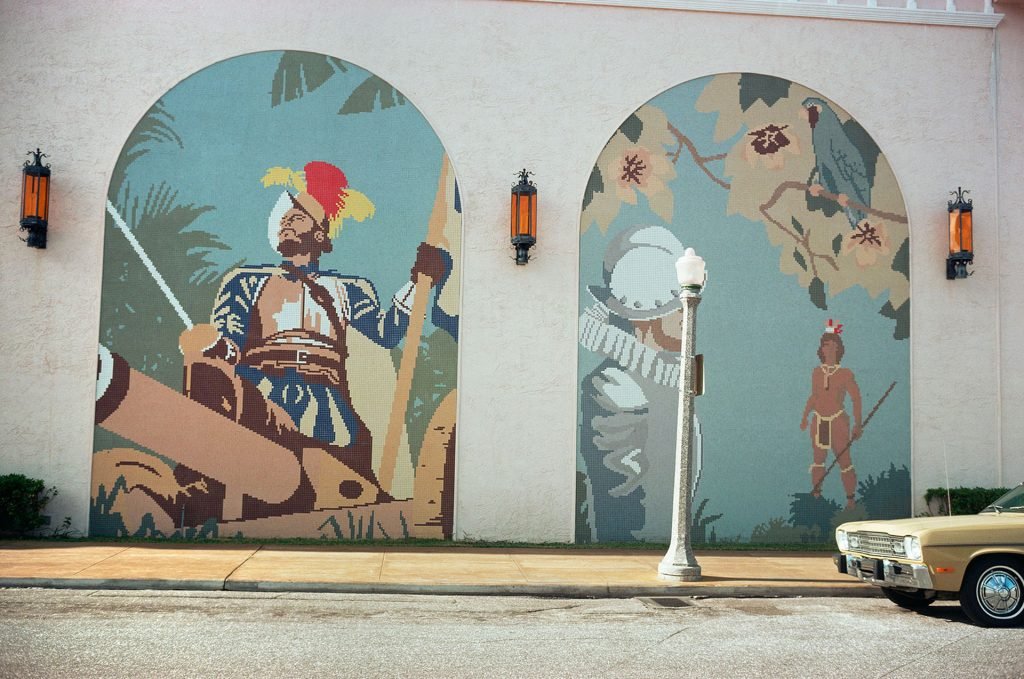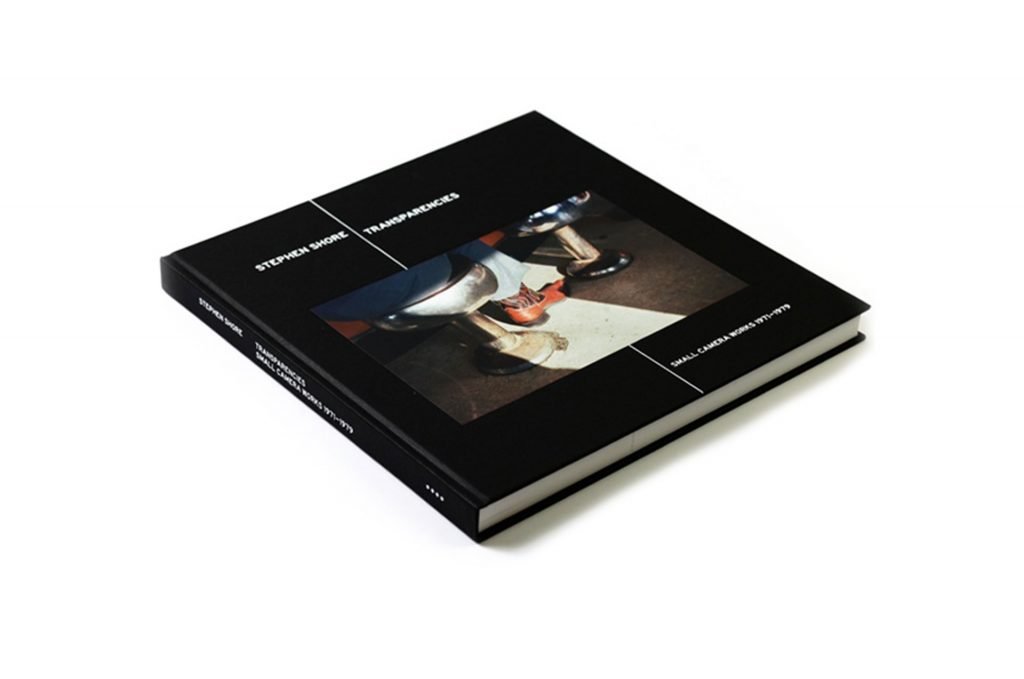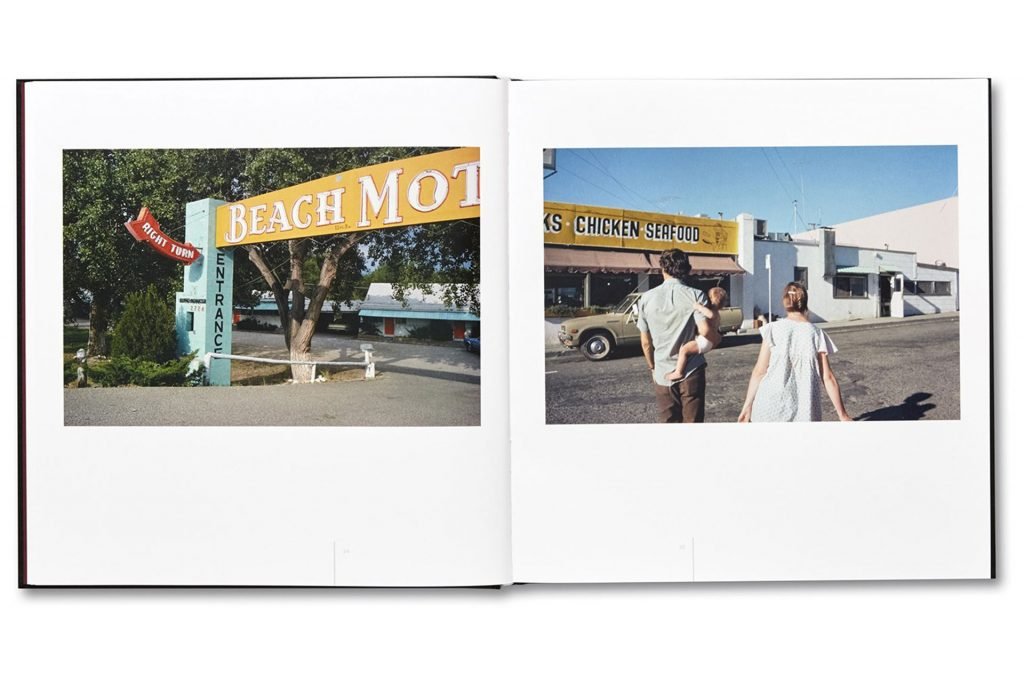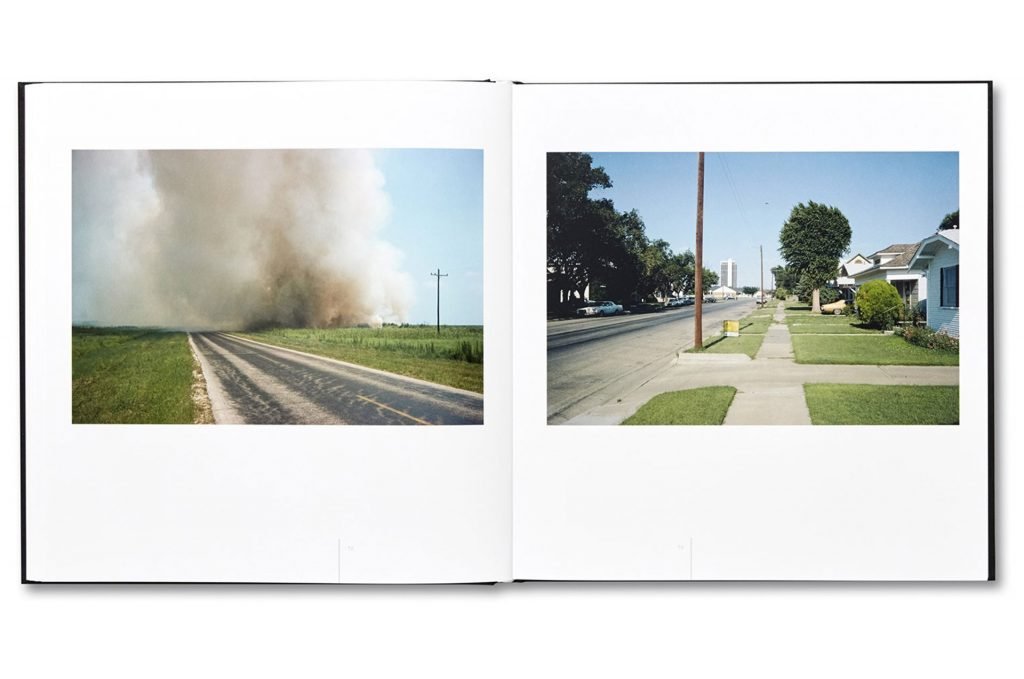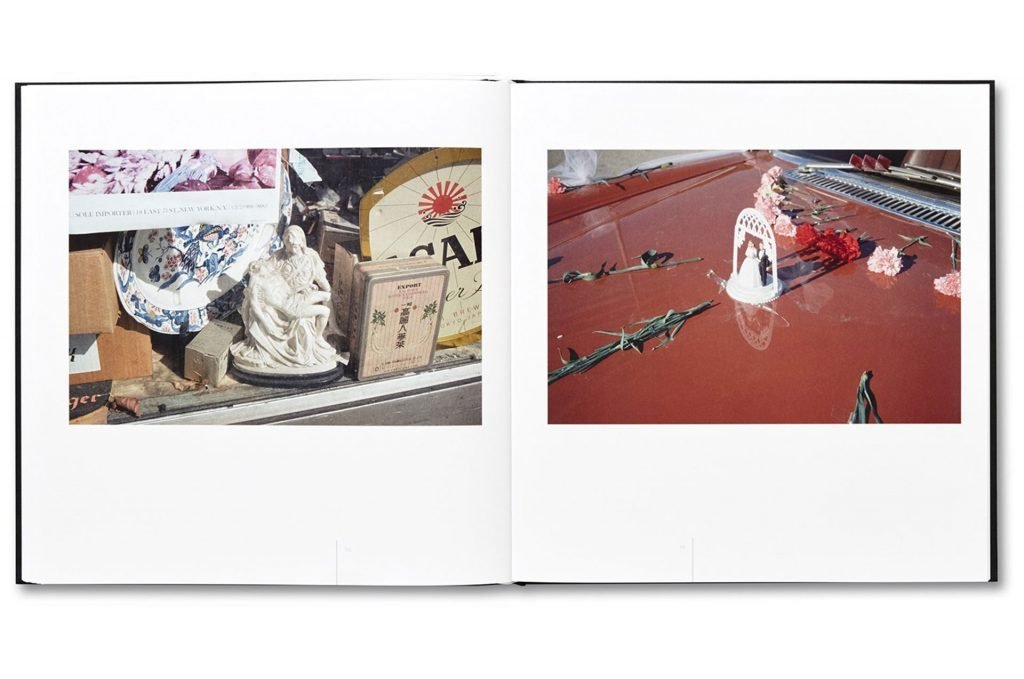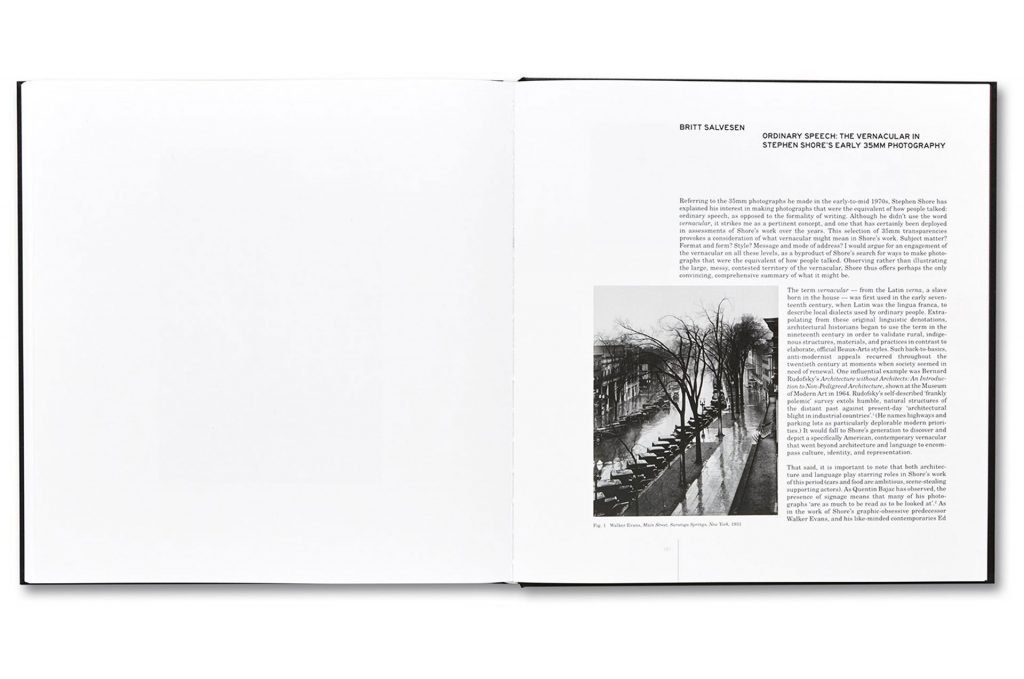Carrying on an important and consolidate photografic and cinematographic tradition that wants the story or mapping of the territory as the central subject in visive – narrative reflection in United States already starting from the nineteenth century (we think of authors like Timothy or Sullivan o’ William Henry Jackson), the work of Stephen Shore, and particularly books as “Uncommon places” (1982) and “American Surfaces” (1999) (photos shot during road trips in the 70s), introduce a new gaze and pioneristic use of color on the need of looking and crossing the landscape which we can affirm be intrinsically bound to the cognitive and cultural experience of the American spirit.
Transparencies: Small Camera Works 1971-1979 is a work that offers us the possibility to accompany, through an alternative report, the legendary crossing of the United States if Stephen Shore. An experience, a traverse of the territory that certainly constituted for this author the turning point toward a new and bright vision of the same American landscape.
Along with his large format camera, Stephen Shore also took a 35mm Leica with him on his travels.
The images on bright-colored slides, made with this smaller and therefore more agile machine, are intimate, spontaneous and personal, and, although preserving the author’s studied formal sensibility, report a postural and interaction ability that differentiates and supports the iconic project for which this author is famous.
In this collection of completely unpublished photographs whose vocabulary is familiar (telephone boxes, highways, homes, fast food, sunny parking lots), the alternative format and the distinct compositional and chromatic experience redesign the same subjects, showing of them, but above all of the author, a new and so far unknown character of this undisputed master of modern American photography.
An aspect, the one revealed through this collection of images, which reveals both a detail-oriented investigation of the American landscape of the 70s, as well as the rigorous formal exercise that underlies all true visual research.
Stephen Shore‘s work has been widely published and exhibited for the past forty-five years. He was the first living photographer to have a one-man show at the Metropolitan Museum of Art in New York since Alfred Stieglitz, forty years earlier. He has also had one-man shows at George Eastman House, Rochester; Kunsthalle, Dusseldorf; Hammer Museum, Los Angeles; Jeu de Paume, Paris; and Art Institute of Chicago. In 2017, the Museum of Modern Art opened a major retrospective spanning Stephen Shore’s entire career. He has received fellowships from the Guggenheim Foundation and the National Endowment for the Arts. His series of exhibitions at Light Gallery in New York in the early 1970s sparked new interest in color photography and in the use of the view camera for documentary work.
More than 25 books have been published of Stephen Shore’s photographs including Uncommon Places: The Complete Works; American Surfaces; Stephen Shore, a retrospective monograph in Phaidon’s Contemporary Artists series; Stephen Shore: Survey and most recently, Transparencies: Small Camera Works 1971-1979 and Stephen Shore: Elements. In 2017, the Museum of Modern Art published Stephen Shore in conjunction with their retrospective of his photographic career. Stephen also wrote The Nature of Photographs, published by Phaidon Press, which addresses how a photograph functions visually. His work is represented by 303 Gallery, New York; and Sprüth Magers, London and Berlin. Since 1982 he has been the director of the Photography Program at Bard College, Annandale-on-Hudson, NY, where he is the Susan Weber Professor in the Arts.



